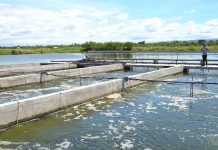– Multi-million peso cold chain facilities established in Davao, Gensan, CDO
THE government’s budget for itsld chain program will be raised to P1.5 billion in 2010, up 50 percent o the current year’s budget, according to Agriculture assistant secretary Salvador Salacup at the opening of this week’s international seminar on the cold chain system in Davao City.
The international gathering was organized by the United States Department of Agriculture (USDA), in cooperation with the Philippines’ Bureau of Postharvest Research and Extension (BPRE) and the Cold Chain Association of the Philippines (CCAP), at the Marco Polo Hotel, July 27-29. The seminar tackled the theme “International Cold Chain Standards and Regulation: Economic Viability, Food Safety and Quality through Strong Public-Private Partnership.”
Speakers and participants came from the US, Great Britain, Indonesia, Malaysia and the Philippines.
Asec Salacup said the current year’s budget for cold chain projects is P1 billion which covers ice-making facilities, refrigerated trucks, pre-cooling systems that are strategically distributed among cooperatives, farmers associations, tramlines, the food links programs, roll-on/roll-off promotional campaigns and training that is inherent in such programs.
“We would like to inculcate into our stakeholders, primarily the farmers and the fisher folk, the importance of this cold chain program carrying with it support services for logistics, transportation, food safety, food hygiene, all in all leading to a better Philippines and a better agriculture for our citizens, “ Salacup said.
Considering that Mindanao is not in the typhoon belt, unlike Luzon and parts of the Visayas which are battered by a yearly average of 21 typhoons, Salacup said the country looks to Mindanao as a source of food. He added that 55 percent of the nation’s demand for agricultural commodities is consumed by the National Capital Region (NCR), Region 3 and Region 4.
Anthony Dizon, CCAP president, said that in addition to the government’s budget, the private sector will put up the money needed for investing in cold chain facilities.
“I am glad to report that at least three big planned investments have been realized in Davao, General Santos and Cagayan de Oro in the past three years,” Dizon said, adding that each facility was put up at the cost of from P100 million to P200 million.
Ms Emiko Purdy, agricultural counselor in the United States embassy in Manila, said that improving the cold chain system of the Philippines with the assistance of the USDA, is mutually beneficial to both countries.
“Last year we exported roughly $1.7 billion worth of US agriculture products to the Philippines, about one-fourth of that perishable, mostly vegetables and meat products. So, it is also in the USDA’s interest to help develop the Philippines’ cold chain systems, Purdy said.
“If we are to ship commodities from Mindanao to the demand centers in the Visayas and Luzon, then globally competitive and scientifically-proven technologies such as the cold chain system will have to be implemented properly,” Salacup said, adding “this falls hand in hand with the Strong Republic Nautical Highway, the roll on/roll off program, and the food links programs to ensure that agricultural commodities in Mindanao arrive in the demand centers in their freshest forms.”
Dr. Clement G. Gehlhar, USDA global cold chain coordinator, said she is impressed by the innovative approaches of the Philippine agricultural industry. She lauded the strong cooperation between the DA and the cold chain systems association, saying there are only two other countries in the world with such cooperation.
She said that with such a positive relationship it would be easier to close the identified gaps in the cold chain systems.
In the same media forum, Salacup also confirmed the proposal of the Davao City Chamber of Commerce and Industry, Inc. headed by Simeon P. Marfori II, to convert the old terminal of the Davao International Airport into a food depot, using airplanes for transport of goods out of the region to other parts of the country.
“Viability will have to be examined,” he said, “I’ve known some complaints of tuna and cutflower shippers that using the air transport system could be quite prohibitive. So we have to find alternatives. It could serve as a food depot but not limited to air transport. Shipping facilities—the roll on/roll off program, the Strong Republic Nautical Highway complement this need for efficient transport system, even land transport is also an option for our stakeholders.”
Ricardo L. Cachuela, executive director of the Bureau of Postharvest Research and Extension (BPRE) based in the Central Luzon State University in the Science City of Munoz, Nueva Ecija. [AMA]






